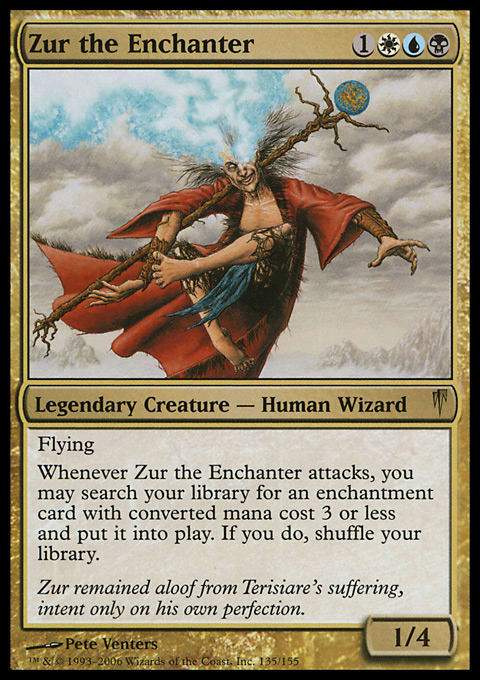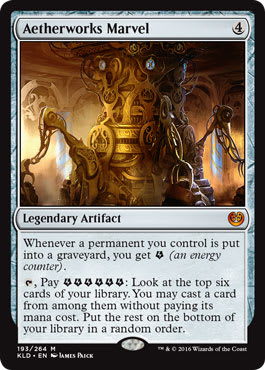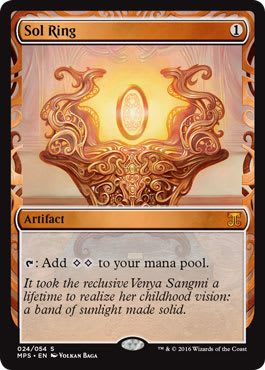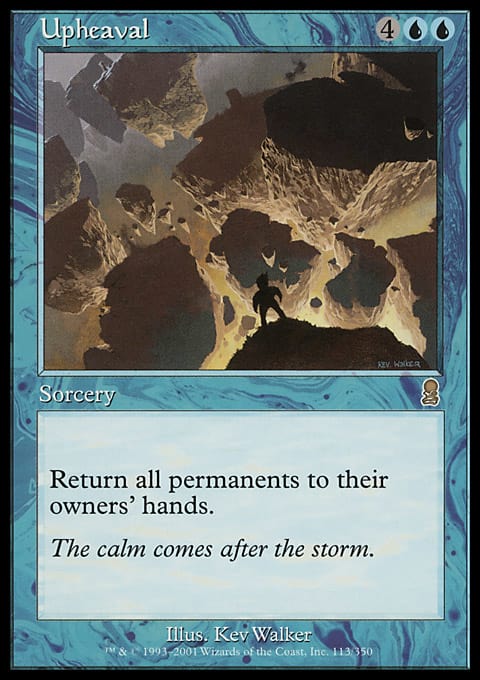Hello folks! I hope you are having a great Monday today!
Today I want to delve into an ongoing issue and trend I’ve been noticing for a while.
Has Magic become too homogenous?
- Composed of parts or elements that are all of the same kind; not heterogeneous:
a homogeneous population.
- Of the same kind or nature; essentially alike.1
We were preparing for a Commander game at the local Magic table. Some new players had entered the local game shop, ready to play some Magic. After fifteen minutes of introductions, they sat down at the table and opened deck boxes. Other than a few decks for tournaments, all they had was one Commander deck each. We flipped our Commander, and played and talked, the five of us.
I was playing Diaochan, Artful Beauty. The people at the card shop that were common players were running Sliver Overlord and Teferi, Temporal Archmage. These two new players had Narset, Enlightened Master and Karador, Ghost Chieftain. Their decks were abusive, and obvious, with the decklists you could “Role Call” yourself straight out of Spike.com. And the Sliver Overlord and Teferi decks were no different. My Diaochan was the only deck of the five you’d call casual.
I mentioned in an article a couple of weeks ago on my Jeleva, Nephalia's Scourge project to combat the heavy nature of Spike Commander in the region. That’s just how it is here. But that’s not the only place I’ve noticed a recent trend toward homogeneity.
I was in Boone, NC at an interview with Appalachian State for a job with them. While there, I played with some students and staff and saw the same thing. In the last six months, gaming in Arizona, New England, in the Gulf Coast, in North Carolina, and in Texas have all seen the same things. Magic Online? That too. We have become too homogenous.
Allow me to set the stage with our core four Constructed players.
Dramatis Personae
Commander — The supposed casual entry in the room, Commander was once a selection from many casual formats and options, but has grown into the default casual format.
Standard — This no-holds barred format rocked by a handful of decks, a handful of artists who play other archetypes, and otherwise requires a constant new injection of cards to make work. The constant attention it gets from all corners is quite big.
Modern — This format is the common entry point for players either post-Standard or looking from more. It is a format that includes many decks, and a good number of those are known powerhouses.
Legacy — This format is the old-timers dream, played rarely; but, for those who cherish it, it has a certain cachet that cannot be touched. Unlike Modern, the cards and plays here are actually tempered by the brake of Force of Will and others, and in some ways, Legacy is actually more open than Modern as a result.
And that’s it! No more players will play on our stage. We have no supporting roles for any other Constructed formats. Extended is done. Vintage is relegated to a virtual cameo. No other casual formats are played with any sort of regularity.
But, what leads me to think we are overly homogenous?
The Signs
There was a time when playing alternate formats for casual Magic was extremely important. Every playgroup had their own set of formats they rotated through, enjoyed, or tried out after reading about it elsewhere. Alternate formats were a heavy part of the Magic culture!
But, we’re now at a point where people don’t even have a non-Commander 60 card deck for casual Magic, let alone know of or play any alternate formats. They are not managed or marketed nearly as much as they used to be.
Meanwhile, the number of options has dropped at a variety of events, decks, and more.
Here, let us demonstrate the growth and importance of alternate formats, because if you weren’t playing then, then you may not accept this premise.
Example #1 — The Ferrett, one of the greatest multiplayer writers of all time, was writing the Serious Fun column at Wizards of the Coast. In June 2008, they wanted to push alternate formats more in their column, and that wasn’t a place The Ferrett was super-skilled at, so they moved from him to Kelley Digges. Pushing alternate formats was a key part of where Wizards wanted to push their own web site and identity.
Example #2 — Wizards of the Coast used to run different events every 6 weeks for Arena season, including wacky drafts, playing with a Pre-constructed deck and merely adding a sideboard, Vanguard infused-Standard and more. It was a lot of fun, but that was retired.
Example #3 — Key casual central clearinghouses of places to exchange format ideas and variant suggestions are still there for research purposes, but barely touched. Consider the Casual Players Alliance as a useful example.
Example #4 — Magic content, from Magazines to websites, came loaded with different ideas projects, ad ways of playing the game, including some bizarre options out there. These were devoured and used all over. From Scrye to Inquest to The Dojo and Star City Games and Pojo.com , they all had major casual oriented content.
Here, let me do one example. I’ll take SCG. I am going to hit up a random week at SCG. Let’s do 10 years ago. I’ll randomly determine a week. I roll a d12 and get 6. All right, June. Now, let’s randomly choose with my d4. A 1, the first seven days it is. June 1st through June 8th, 2007.
SCG published articles on the upcoming Regionals event, casual writers like Talen Lee, Bennie Smith, Jamie Wakefield, The Ferrett, Peter Jahn, myself and there was even a feature piece by Paul Jordan on casual drafting. Most of these writers wrote about alternate ways of playing. The traditional Spike article circuit is the Standard, Legacy, Modern, Limited monster, with Commander and financial articles included too. And while this random week was one week before a huge tournament, which warped the article selection by a lot of writers, including Mike Flores, and you still have a Vintage article by Steven Menendian, online gaming with Craig Stevenson, and more. There were a number of non-Regionals articles this week on SCG. We have the expected articles by tournament leaders, such as Jeroen Remie and Tiago Chan, in addition to me writing about Five Color. It was a diverse slate of articles, authors, and formats. That’s where we were ten years ago.
Now, just as a spot check, where was SCG in the first week of June in 2016? We have Legacy, Modern, Commander, Standard, one flavor article (thanks John Dale Beety, you remain one of my favorite writers over at SCG!), one finance article, two general winning strategy articles, including one on how to play-test for a tournament, and then some Limited (in a tournament context, not Cubes or anything casual). And that’s it. No articles on anything from an alternate casual perspective. No Cubes. No Pauper. If it’s not Commander, then it’s not on most of the Spike sites.
Now, me telling you that SCG has shifted its article lists and central concept is hardly news to anyone. That’s fine! But it’s one highly visible example of the depth we used to have. As a side note, I regularly pushed variants, formats, and more with my articles. It’s always been a passion of mine. But the hits have dwindled. The comments are drifting away. It’s not where most players are today.
Example #5 — Magic Online was adding numerous casual formats to its stable of options when you played.
Okay, so some of those early Signs just reveal how much we’ve changed, and we have. Everything from tournament Magic to casual Magic has shifted. Next we’ll take at a few more ways of how?
The Changes
Example #1 — A loss of formats used. I know this change happened a few years ago, but Rochester draft used to be a big format played in tournaments as a key draft method, and in many ways, it was more skill intensive than normal draft, but more rewarding because if you were being hosed out of a color, you’d know. It used to be at the Pro Tour level on down, and back in 2005 was the last time it was used there. I was commiserating with a fellow player who played back then, and he didn’t even remember Rochester Draft!
And this is not the only thing. I can’t remember the last time I saw a sanctioned draft event with a draft variant like Anaconda Draft, Reverse Booster Draft, or Rochester Draft, rather than normal.
(In Rochester Draft you have each player in draft order open the pack, flip the cards face up and pick first, then it goes until the person who picked 8th grabs the 9th card and order reverses until the pack is drafted, and everyone sees what is opened and what was taken where. Anaconda Draft is just like a Booster Draft, and after the first pick is taken from the pack, you may exchange, on a 1:1 basis, any card you already drafted for cards in the pack. In Reverse you draft the worst cards possible, and then hand them off to your foe to build a deck prior to playing, and you do the same with the chaff they drafted.)
The loss of formats is a big hit. Yeah, I know Rochester happened 12 years ago, but lots of formats and variants that were once very popular are now virtually unheard of, such as Emperor. But we have nothing new to replace them.
Example #2 — Over the last few years, casual formats have been removed from the Magic Online client.
Example #3 — Even though a bunch of formats were added to Friday Night Magic as options (Thanks WOTC!!!), I haven’t seen or heard of anybody using them. I’ve only played and seen about 15 different places around just America, so my knowledge is admittedly limited, but that sees no new frontiers being built.
Example #4 — I run into many Magic players who have three or four decks built. This is not unusual, but instead of a casual 60-card Solider deck or 63-card fun Green and Black reanimation deck, instead their four decks are Soul Sisters from Legacy, Tron from Modern, an Aetherworks Marvel deck from Standard, and a Commander deck built around Zur the Enchanter. Even asking for a casual game means playing against a tournament level deck.
Example #5 —Why today, when I look through Commander decklists in real life at stores, conventions, are the decklists more similar than ever before? It’s like I was Sleeping Beauty, and when I awoke, Shelden Menery had issued an edict that read, “You will play all of your Commander decks from these 400 cards and no more!”
Why are real life Commander decks running the same 400 cards over and over and over again? Why is the format becoming more homogeneous?
Example #6 — Outside of Commander, I haven’t recently encountered, in real life, anyone playing any alternate Constructed formats other than our four core Constructed players. I haven’t seen one casual 60 card deck by anybody in months, let alone anything else. No Rainbow Stairwell. No Peasant. No Five Color. No Tribal Wars. No Extended. No real life Momir Vig Basic. (That’s a joke). And other than Cube, I haven’t run into any casual drafting alternatives all, no Rotisserie, no Type 4 (sometimes called Limited Infinity) or other formats.2
I can remember local card stores constantly doing special tournaments. Here’s St Patrick’s Day! Let’s have a Green-only Constructed tournament! SCG announced a major Scavenger Hunt Tournament where they listed a bunch of cards that you had to include, such as, “A card with art from Ron Spencer.” Major tournaments with alternate favorites.
And I haven’t even run into any variants of Magic either. No Star, or Secret Alliances, or Emperor. No Chaos Magic, no random enchantments. I have still seen folks playing with Planes, but that’s about it.
Don’t forget that there is nothing wrong with that at all! Magic is about everybody having a chance to express themselves. And if you adore these core vanilla formats, then great! I’m glad! More power to you!
But what happened to the diversity in the format? Where did this come from? What is the consequence?
And moreover, is this trend changing or shifting?
Why and What Next?
I think one of the reasons this has happened is how large and intimidating the card pool has become. When you consider the vast number of game pieces we have to think about each time we build a deck or look at our card pool or review an article, it is just so much easier to skip it.
There is a form of decision-making out there called Satisficing. That is not a typo for Satisfying. It’s opposed to other forms, such as Rational Decision Making, and it’s arguably the most common way we make decisions. Rather than figure out the best possible solution, we take the first one that works.
There are several different models for decision-making, and Rational is a good one because we do use it for some big decisions or ones where we need the right data sets. But normally, the one we use the most is Satisficing. Let me give you a good example.
It’s lunch time. I’m hungry. Where do I go to eat? What do I choose when I get there?
Well, to make a Rational Decision, I’d want to look at the menus of all of the various nearby places to eat, considering the different options, weighing the time it would take to visit each one and decide if I could get there, order, eat, and return in the given time frame, look at the cost of each item on the menus in the appropriate range, cross check them against my own appetite, and then make an informed and rational decision.
Who has time for that?
Given these constraints, I’m likely just head to grab the nearest restaurant that works and is feasible, and grab whatever works on the menu. Maybe the Cheese Steak Hogie from a nearby Diner wouldn’t have been the ideal Rational choice, but it Satisfices. It works. So I do it and move. (This is also often done in committee and group work. Rather than coming up with the best solution, the first feasible one is done as well.)
Much like lunch, I think the overwhelming amount of cards has begun to weigh on deck choices in a wide-open format like Commander. The desire is to just grab a card that works and move on and eat lunch. So rather than figure out the perfect mana rocks for the deck, just add in Sol Ring. Rather than figure out the best creature removal you need, just toss in Swords to Plowshares. Rather than grab the best top-end creatures for your deck, just use Consecrated Sphinx. We know they work. We know they put pressure on folks. They are the Cheese Steak Hogies of Commander.
Consider Countermagic as a good example. Barring a limited cardpool or something, there is just no reason to run Cancel. There are so many better 3-mana choices. But to try and figure out which is the best of Forbid, Dissipate, Dissolve, and Disallow for your deck takes a lot more head space. Why are you running Infest instead of Drown in Sorrow? Because knowing that many cards out there and role calling them every time you build a deck is rough. Tossing something into a Gatherer search is tough. These things take time.
Given that Commander in particular, looks at the largest card pool of potential cards, it can be onerous to sit down and build the best deck for a given Commander. So you just add in Good Stuff and call it.
And that’s where I think some of this pressure comes from.
I do think there is a willingness to work on some variants and formats of given Core Four players. I have received good feedback from players on my Commander 95 creation where you just run cards initially printed in or before 1995. We’ve seen Alphabet Commander (every card in your deck begins with the first letter of your name) and Pauper Commander and more have some legs. I think there is a need for folks to push out.
But anything else outside of the Commander bubble for casual goes nowhere.
So what now?
I really enjoyed a piece by Cedric Phillips recently where he and some buddies took some time to play some unusual and off-the-wall Limited environments. Check it out!
And we’ve seen some easier-to-understand formats hit, such as Block party (everyone builds a Block legal deck, like Odyssey Block or Ravnica Block and plays them) or Build Your Own Block (each player chooses three sets to make a Block, the 1st, 2nd, and 3rd of any given Block, mix and match. You could choose Invasion, Morningtide, and Apocalypse or Scars of Mirrodin, Nemesis, and Future Sight.
Those are very grokkable, and I’d love to see some simple formats like those get pushed. There’s a level of easiness with it that makes it easier to wrap your mind around. Take Pauper, which only allows commons. Well there are still thousands and thousands of commons in print. But Block Party limits you to a single Block of cards, and most people would play one of the best decks from that Block’s era, I mean, no one is choosing Odyssey Block and running Blue and White control. They are either doing the Upheaval + Psychatog thing or the Roar of the Wurm + Wild Mongrel + Quiet Speculation thing. And people will choose their Build Your Own Block around a certain concept. Want a good artifact deck? Then you are likely to look at a Mirrodin set, a Scars set, something from Esper over at Alara, Kaladesh, and such. So you already know what you are looking at, and your mind is easily able to concentrate, because you know you aren’t choosing Legions for your artifact deck.
I would love to see an increase in the use of alternate formats for tournaments that work.
And you could do the same for alternate Limited environments. Cube for Sunday Afternoon? Rochester FNM? 3 Solomon Draft? You’ve got this!
And yet, I feel like Magic has drifted into a vague poorly definitely sense of malaise, from an unknown source, but affecting the game. A blasé sense that the great game we know is starting to feel a little overly repetitious. A little too homogenized.
Is anyone else feeling that way? What do you and your playgroup do to fight it? To push against it? Any formats, variants, or other things to do?
Thanks!
1 As per dictionary.com
2 If you don’t know what those variants and formats are, click this link!
3 Check out this primer on Rochester by Alex Shvartsman






























